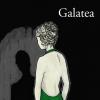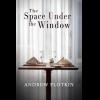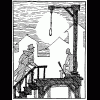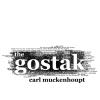Innovative Interactive Fiction
Recommendations by Victor Gijsbers (The Netherlands)Much Interactive Fiction, and some of the best, quite obviously descends from Zork and other early Infocom text adventures. But some of it departs from that terrain, and attempts to take the medium to new and unexplored areas.
I here list some of the most interesting interactive fiction that takes such an innovative approach. These are the pieces you ought to play if you wish to see what the medium is capable of, especially if you would like to write innovative IF yourself. Learn from what works AND from what does not work.
(I will be concerned with games that are innovative even now, not with games that were innovative once but the design of which has been widely embraced by later authors. Also, I will not be concerned with the kind of system abuse that consists in letting player play Tetris on the Z-machine.)
This list is currently very incomplete.
Add a comment
 1. Galatea
1. Galatea
by Emily Short
(2000)
Average member rating:  (332 ratings)
(332 ratings)
Victor Gijsbers says:
This game explores the possibilities of talking to an NPC, in this case the living statue Galatea. Speaking with Galatea about different things and in different orders will lead to very different endings. Required reading for anyone interested in free-form conversation systems and/or complicated emotional states of NPCs.
 2. The Space Under the Window
2. The Space Under the Window
by Andrew Plotkin
(1997)
Average member rating:  (97 ratings)
(97 ratings)
Victor Gijsbers says:
A unique experiment in text interaction, The Space Under the Window lets you type a single word in order to influence the text which is shown. A decidedly strange experience, which may be closer to hypertext than to interactive fiction. Required reading for anyone interested in highly non-standard interaction with the game world and/or designs with no explicitly modeled game world at all.
 3. Lock & Key
3. Lock & Key
by Adam Cadre
(2002)
Average member rating:  (74 ratings)
(74 ratings)
Victor Gijsbers says:
At heart a traditional puzzle game, Lock & Key nevertheless breaks new ground in two ways: its graphical interface, highly unusual in IF; and the fact that the player spends more time designing the game world than interacting with it. Recommended reading for anyone interested in IF with GUIs and/or model worlds which are shaped by player choices.
 4. Slouching Towards Bedlam
4. Slouching Towards Bedlam
by Star Foster and Daniel Ravipinto
(2003)
Average member rating:  (210 ratings)
(210 ratings)
Victor Gijsbers says:
Apart from some interesting stylistic experiments, Slouching towards Bedlam's innovation consists in building a game around a set of moral dilemma's. It has several different endings, but leaves it up to the player to decide which is the optimal one. Required reading for anyone interested in games propelled by moral choices and/or games beyond the win/lose paradigm.
 5. The Gostak
5. The Gostak
by Carl Muckenhoupt
(2001)
Average member rating:  (87 ratings)
(87 ratings)
Victor Gijsbers says:
Written in a non-existent language, The Gostak turns the puzzle-structure of IF on its head. Instead of interacting with puzzles in the world through the parser, the player now has to find out what the hell the parser is saying. Required reading for those who wish to take IF into a more linguistic direction.
 6. Whom The Telling Changed
6. Whom The Telling Changed
by Aaron A. Reed
(2005)
Average member rating:  (64 ratings)
(64 ratings)
Victor Gijsbers says:
A game that almost entirely eschews the traditional IF commands in favour of a conversation interface where you can mention topics in order to influence the story that the storyteller is telling your tribe. This leads up to an interesting moral choice where the game does not try to tell you whether you have acted rightly or wrongly. Required reading for those interested in conversation interfaces and those interested in puzzleless but interactive IF.
 7. Being There
7. Being There
by Jordan Magnuson
(2010)
Average member rating:  (14 ratings)
(14 ratings)
Victor Gijsbers says:
This game is all about the joy of experiencing and interacting with an environment: all puzzle-like constraints are removed, and even some of the physical ones are. There is no story, and progression is easy. It also makes very effective use of photographs. Required reading for those interested in freeform exploration, and for those interested in the use of visual media in interactive fiction.
View this member's profile
See all lists by this member
Create your own Recommended List
1. Galatea
 (332 ratings)
(332 ratings)2. The Space Under the Window
 (97 ratings)
(97 ratings)3. Lock & Key
 (74 ratings)
(74 ratings)4. Slouching Towards Bedlam
 (210 ratings)
(210 ratings)5. The Gostak
 (87 ratings)
(87 ratings)6. Whom The Telling Changed
 (64 ratings)
(64 ratings)7. Being There
 (14 ratings)
(14 ratings)